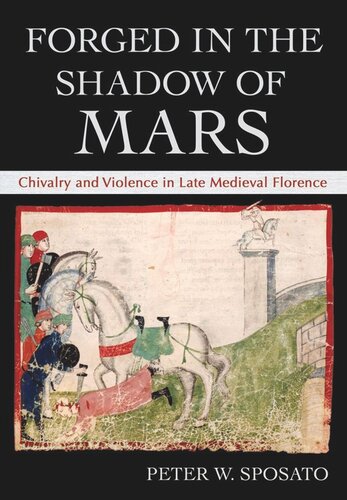

Most ebook files are in PDF format, so you can easily read them using various software such as Foxit Reader or directly on the Google Chrome browser.
Some ebook files are released by publishers in other formats such as .awz, .mobi, .epub, .fb2, etc. You may need to install specific software to read these formats on mobile/PC, such as Calibre.
Please read the tutorial at this link: https://ebookbell.com/faq
We offer FREE conversion to the popular formats you request; however, this may take some time. Therefore, right after payment, please email us, and we will try to provide the service as quickly as possible.
For some exceptional file formats or broken links (if any), please refrain from opening any disputes. Instead, email us first, and we will try to assist within a maximum of 6 hours.
EbookBell Team

4.7
106 reviewsIn Forged in the Shadow of Mars, Peter W. Sposato traces chivalric ideology's powerful influence on the worldview and behavior of the elites of late medieval Florence. Sposato's work challenges traditional views of chivalry as foreign to the city-state's social and cultural landscape and contests its reputation as a civilizing force. In contrast to the mercantile and banking elites with whom they competed for political power and economic resources, Florentine chivalric elites chose to base their identities on the profession of arms rather than on more lucrative and pacific occupations. They also utilized violence against their peers to assert and defend their honor against those they perceived as socially inferior, reinforcing their claims of social superiority. Closely examining the ideological underpinnings of political violence in thirteenth- and fourteenth-century Florence and their connection to the chivalric values promoted in literary texts, Forged in the Shadow of Mars shows how chivalric elites played an important role in transforming the city-state into the dominant territory of north-central Italy. Sposato also provides an important corrective to assumptions about the nature of elite violence in medieval Italian cities, complicating the familiar understanding of Italian communal elites as a homogeneous group animated by mercantile and civic values.